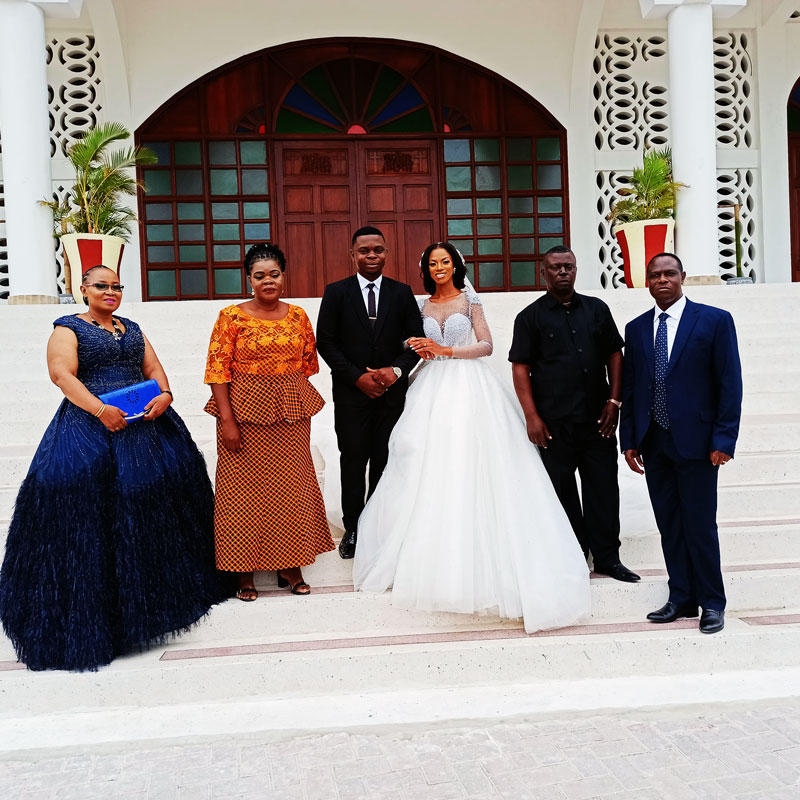Marriage: Is marriage a Sacrament, Convenant or Contract?

Sacrament:
A sacrament, contract, and covenant are three different concepts with distinct meanings. Here’s a brief explanation of each term: In religious contexts, a sacrament is a sacred ritual or ceremony that is regarded as an outward sign of inward spiritual grace. Sacraments are typically associated with specific religious traditions, such as Christianity. They are considered important acts of worship and are believed to convey divine blessings or spiritual benefits to participants. Examples of sacraments in Christianity include baptism, the Eucharist (also known as Holy Communion or the Lord’s Supper), and confirmation.
Covenant:
A covenant is a solemn and binding agreement between two or more parties, typically characterized by mutual commitments, promises, or obligations. Unlike a contract, a covenant often carries a deeper sense of moral, spiritual, or religious significance. It involves a sense of loyalty, trust, and faithfulness in maintaining the agreement. Covenants can exist in various contexts, including personal relationships, religious beliefs, and legal arrangements. In religious terms, a covenant may refer to the relationship between God and individuals, where God makes promises and expects certain behaviors or actions in return.
Contract:
A contract is a legally binding agreement between two or more parties that outlines their rights and obligations. It is a voluntary arrangement where the involved parties agree to certain terms and conditions. Contracts are commonly used in various contexts, such as business transactions, employment agreements, and lease or rental agreements. They serve as a means to ensure that the parties involved understand and fulfill their responsibilities, and they provide a legal framework for resolving disputes if they arise.
In summary, a sacrament is a religious ritual or ceremony that conveys spiritual grace, a contract is a legally binding agreement between parties, and a covenant is a solemn agreement often associated with moral, spiritual, or religious significance. Certainly! Let’s delve into more detail about the different perspectives on marriage within Christianity:
the different perspectives on marriage within Christianity:

Marriage as a Sacrament:
In Catholicism and Eastern Orthodoxy, marriage is often considered one of the seven sacraments. These traditions emphasize that through the sacrament of matrimony, God’s grace is conferred upon the couple. The marriage ceremony is seen as a sacred ritual that symbolizes the union of Christ and the Church. The couple’s love for each other is understood as a reflection of Christ’s love for his followers. The sacramental nature of marriage is believed to bestow divine blessings, strengthen the couple’s relationship, and sanctify their union. In this perspective, marriage is considered a visible sign of God’s grace and presence. The spouses participate in the divine plan for creation and are called to live out their vocation in a loving and self-giving manner.
The marital relationship is viewed as a means of mutual support, spiritual growth, and the formation of a Christian family. The sacramental understanding of marriage underscores its lifelong and indissoluble nature, aligning with the belief that God’s grace sustains the marital bond.

Marriage as a Covenant:
The concept of marriage as a covenant is rooted in biblical passages that describe the marital relationship using covenantal language. For example, in the book of Genesis, God establishes a covenant with Adam and Eve as the first couple. The marriage covenant is seen as a solemn and binding agreement before God, characterized by love, faithfulness, and lifelong commitment. From this perspective, marriage is viewed as more than a legal or social contract; it is a sacred bond that involves spiritual and moral dimensions. The couple’s mutual promises and commitment are understood to reflect God’s covenantal love for humanity. The covenantal view emphasizes the sacrificial love, selflessness, and loyalty that should characterize the marital relationship. It highlights the importance of nurturing the bond and working together to fulfill the promises made within the covenant. While the exact interpretation of the marriage covenant can vary, this perspective often emphasizes the lifelong commitment of the spouses, the mutual support and care they provide for each other, and their shared journey towards spiritual growth and mutual sanctification.
Marriage as a Contract:
Some Christian traditions approach marriage primarily as a legal and social contract. While recognizing the importance of love and commitment, this perspective focuses on the rights, responsibilities, and obligations of the spouses within the marital relationship. Marriage as a contract places greater emphasis on the practical aspects of the union, such as property rights, financial arrangements, and the mutual obligations of the spouses. It acknowledges that marriage involves a legal agreement and the creation of certain rights and duties between the partners. While the contractual view of marriage may not exclude the spiritual or emotional dimensions of the relationship, it tends to place a greater emphasis on the legal and practical aspects. The well-being and support of the spouses, along with the fulfillment of their responsibilities, are key considerations within this perspective. note that these perspectives on marriage are not mutually exclusive, and various Christian denominations and individuals may hold different combinations of these views.The understanding of marriage can vary depending on cultural factors, denominational teachings, and individual beliefs.
It’s essential to note that these different interpretations do not necessarily exclude one another. Some Christian perspectives may recognize multiple aspects, incorporating elements of sacrament, covenant, and contract into their understanding of marriage. The specific beliefs and practices regarding marriage can vary within and between Christian denominations, reflecting the diversity of theological perspectives and cultural contexts.